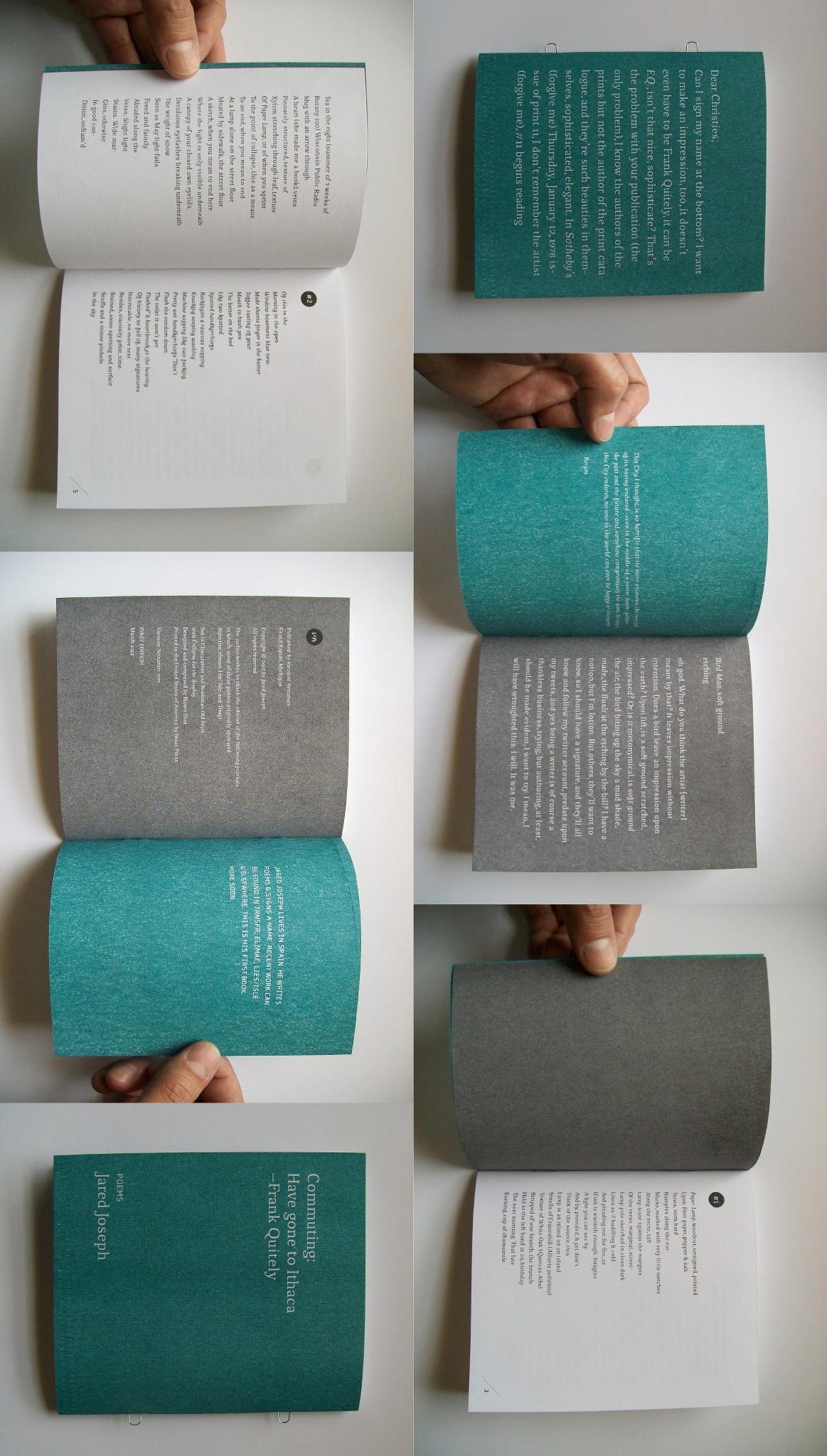An hour of the day when the light fills the page. A corner carol in the library carved with lovers’ initials, the window seat of a favorite coffee shop. A rolling ball pen, a pot of jasmine tea, customized playlists pumped through Pandora. Well-thumbed books stacked on a side table, passages dog-eared, as if mere proximity to genius might somehow instill one’s own prose with wisdom, as if these talismans were a surefire way to conjure and steady the slippery muse.
Whether it’s yoga or a long-distance run, fanatical flossing or the drone of a vacuum, writers love to incorporate warm-up rituals, tics and superstitions into their “process,” and people love to write about them (I did for LIT in 2003), as if the secrets to writing success lay in the rigorous practice of such stringent habits as Franzen’s blindfolds and earmuffs, or drafting while standing, like Hemingway did.
I have my own quirks but lately I’ve noticed they’ve formed a barrier between as opposed to a gateway to the work. Instead of becoming scrappy and resourceful, waking at odd hours while my kids were home all summer, I lazily dismissed the past three months on account of less than ideal conditions. Sure, it’s nice to dream about residencies, retreats in the mountains, by the sea. A room. But many of us do not enjoy quiet, uninterrupted stretches of time. Most of us will never have the financial luxury to do anything but juggle, constantly juggle: work, home, the writing life.
But look at you – scribbling on the subway or on the back of a napkin in a bar or at your cubicle in between meetings – you keep at it, because it doesn’t go away, the writing calls and you respond regardless of whether it’s a good time.
That’s the thing.
Writing is hard. There is no perfect setting or recipe to ensure smooth sailing, no elixir or lucky charm that will allow you to leap over the struggles and sweat and fear and doubt that are necessary parts of the process. There is no perfect anything. Trusty readers may nudge you along for a while, an enthusiastic editor, MFA assignments may dictate pace so that you are rolling, churning out work that is solid and reasonable and honest and good, but at some point that rhythm may falter. A system that once fit may suddenly feel baggy or tight. Life intervenes. What remains is the only constant: you, alone with your practice.
Shel Silverstein’s The Missing Piece is perhaps my favorite children’s book. From its spare design (white space, black lines, whimsical sketches of a lumpy Ziggy-meets-Pac-Man type protagonist) to its searching narrative, it is a love story, a story that rejects the pat happy ending but teaches independence, a story that aches as it celebrates, a story of the absence in all of us.
If you haven’t read it go read it, buy it for your kid, your nephew, yourself. It is a healthy reminder to embrace who we are. The Missing Piece looks and looks for its matching part, trying others on for size, longing for, hoping for a hermetic fit, but discovers, ultimately, that it is impossible. Even when it finds a slice that makes it whole, it rolls too fast, past everything – the worms and beetles – life whizzes by. No longer can it sing! So it spits out the piece to experience the ride, to live in moments along the way.
The missing is what makes us – aware, inquisitive, seeking – writers. If the empty were filled, the unknown answered, all nicks sealed and polished, why would we bother? Beauty lies in the openings, incompleteness, the rough edges and loose seams. The missing is what drives our creative energy – stumbling, bumbling, crossing out and connecting arrows and hashing it out in the margins. Like a fingerprint, the inner space from which we write is different for each of us yet ours alone – so love it good. It is what sends us: “hi-dee-ho, here I go/Lookin’ for my missin’ piece.”
Last time I read The Missing Piece aloud, my son grew quiet. “This book is really kind of sad but kind of happy,” he said, in the way life is – and preferred not to say more about it. My daughter, on the other hand, squealed when I sang “grease my knees and fleece my bees,” because rhymes are like that, deliciously ticklish, a raspberry on the lips. Afterward, she took the book and opened it up, its white space and black lines beckoning to her as if there was nothing else in the room. Scooping up a handful of crayons, she set to work, tongue fixed in concentration, curls crowding her eyes, and followed through on her desire – to brighten the page with color, to draw a picture, to write her name.
More of Sara Lippmann’s Read it Loud at Used Furniture.


“you, alone with your practice.” Thank you, Sara. Great post.